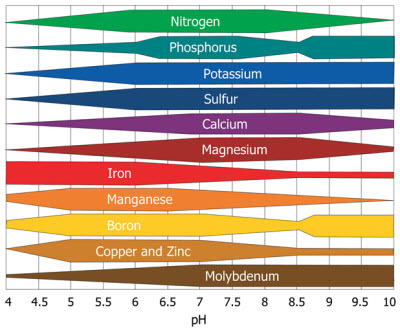
Soil Fertility
Soil fertility is a crucial factor in the success of sorghum yield. When managing soil nutrients for sorghum it is important to consider the soil type, organic content matter within the soil as well as soil pH. Factoring in the soil’s crop history, what was planted the previous year, is crucial, especially if the previous crop was a legume like alfalfa or soybeans. Knowing the manure application history can also help you understand your soil’s fertility.
Soil nutrient testing is critical in determining the number of nutrients to add by fertilizing. Soil testing starts with proper soil sampling. If the precision application of fertilizer is an option, consider grid sampling. Once soil test results are available, it is important to understand how to interpret the results to best help in maintaining good soil health.
Good Soil Fertility Begins With the Proper Nutrients
Nitrogen is most often the nutrient needed to be added to the soil for the best results. State universities and soil labs differ in the amount of nitrogen recommended to be added for a given yield. A good rule of thumb is 1.1 lb. of nitrogen for every bushel of grain sorghum. The highest nitrogen use efficiency is obtained with split applications. To accomplish this, apply a portion of nitrogen preplant, then as a sidedress application approximately 25 days after crop emergence. If chemigation is possible, apply a portion of nitrogen just prior to heading.
Sorghum also needs potassium in high quantities. The amount of potassium to be added as fertilizer will vary greatly depending on the soil type and environment. Many soils are naturally high in potassium and require very little potassium as fertilizer, which is why soil testing is crucial. As a rule of thumb, the amount of potassium taken up by the sorghum plant is very similar to the amount of nitrogen utilized by the plant.
Phosphorus is the third major nutrient required by sorghum. Depending on soil type and the environment, the amount of phosphorus needed to be added as fertilizer will vary considerably. In order to not limit sorghum yield, approximately 80 lbs. per acre of phosphate should be available within the soil. If large amounts of phosphorus are needed, consider banding to reduce the amount needed to be added as fertilizer. In high-yielding environments or when planting on cool soils, consider applying phosphorus in a starter fertilizer.
Other nutrients that may need to be applied include sulfur, iron and zinc. Lime may be required if the pH of the soil drops below 5.6. Low pH greatly limits the availability of certain nutrients (see chart below).

Source: https://cropwatch.unl.edu/soybean-management/soil-and-nutrients-3

